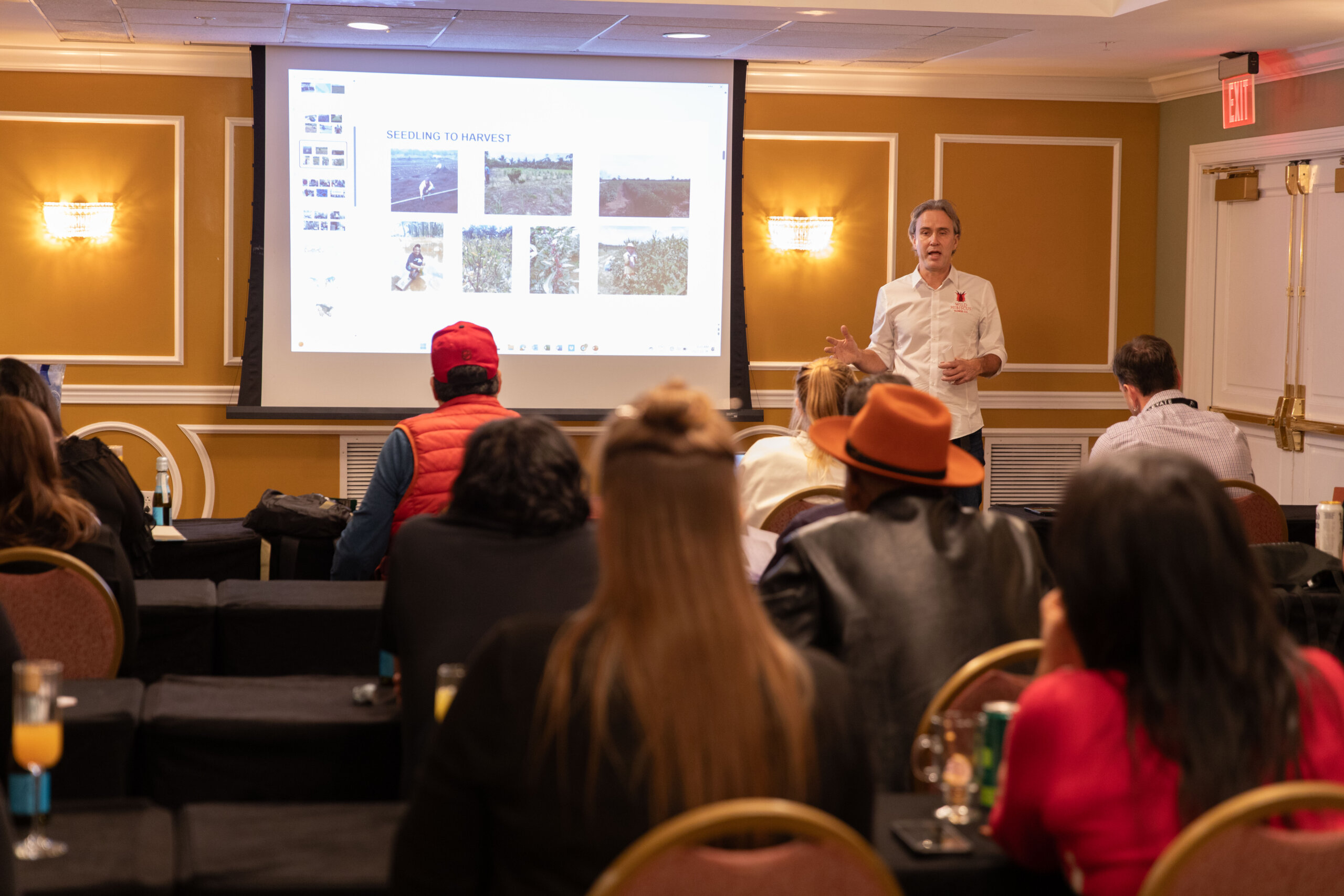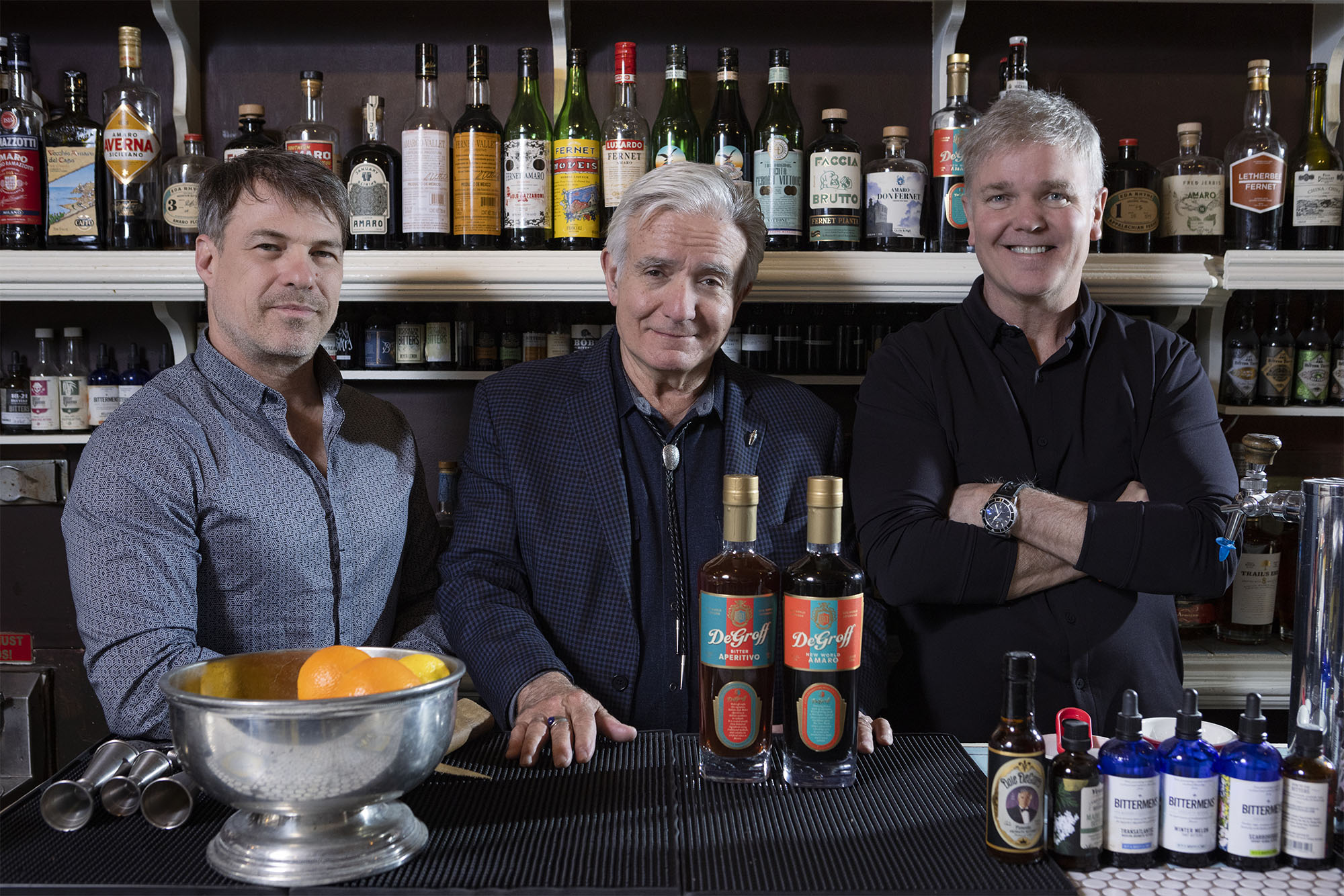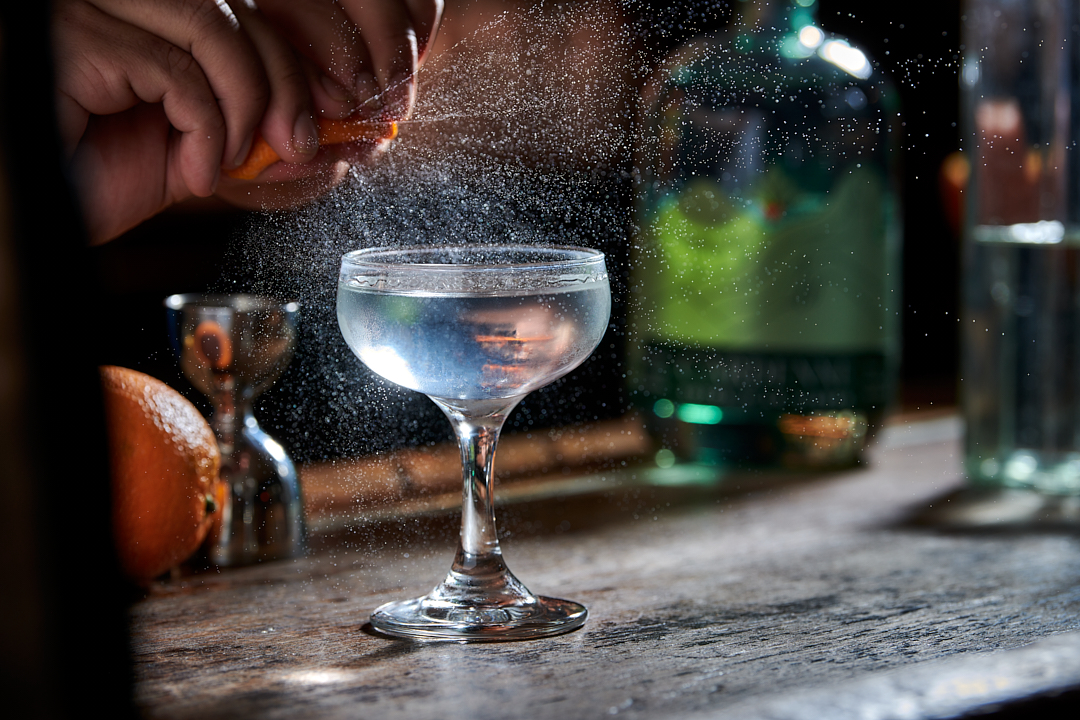Dante’s Linden Pride Talks the Future of Aperitivi
By Anna Archibald
Walking into Dante in NYC’s Greenwich Village is a transportive experience.
You’re instantly struck by the sensation that you’ve stepped off the hectic streets of New York and into a bustling European café. The space, which is a registered New York City landmark, was first opened in 1915 as Caffe Dante, which was a beacon of Italian culture and fare in the city. When Linden Pride and his partner Natalie Hudson reopened the bar and restaurant in 2015, they wanted to honor that legacy. But a lot has changed in the century since the bar’s original iteration.
According to Pride, drinkers outside of the industry were just starting to embrace lower ABV cocktails that featured ingredients with heavily bitter flavors. “When we first relaunched Dante, the Negroni especially was a drink that we loved and would gravitate towards,” Pride says. “It was low in acid—a lot of drinks at that time were heavy on the citrus and sugar and were more like culinary cocktails. We wanted to showcase and celebrate those Italian bitters a bit more. At the same time, we started seeing more and more Italian bitters coming into the market.”

Linden Pride
The bar’s Negroni Sessions menu features various interpretations of the gin, Campari and sweet vermouth cocktail, and it helped bring Italian amari to the fore in an exciting way. For those who have recoiled after the first bracing sip of a Negroni, these iterations made the polarizing drink a bit more approachable. “You have to have a sophisticated palate—bitter is a taste that you grow to enjoy more as your palate develops,” Pride says. “Very few people who try the Negroni for the first time think, ‘That’s my drink.’”
To make customers feel at ease when ordering a drink with an intensely flavored or unknown brand of amari or vermouth, Pride and creative director Naren Young approached the menu through the lens of a more familiar New York cocktail experience. Each cocktail begins with a “lower proof, refreshing, bitter, clean” base, and is then built upon with ingredients that may still be traditionally European, but end up taking the shape of an elegant and complex cocktail.
“We try to create that connection to the European idea and then work back from there, whether it be a Campari on the rocks and espresso in Italy or maybe a pastis in the south of France,” Pride says. “We take that idea that’s very traditional, and we try to add more of an American cocktail approach to it.”
Four years after Dante opened, this approach has proven successful. The bar was most recently awarded World’s Best Bar at the Tales of the Cocktail Spirited Awards, and its cocktail menu remains as buzzworthy as the day it opened. This success only furthers what Young would like to see happen in the United States on a wider scale—not only the exploration of low-ABV and bitter-forward cocktails using ingredients from all over the world, but also the sophistication of day drinking, a concept that is still foreign to much of America.
“I think where the aperitivo movement is headed is defining a time and place and taking it away from that negative connotation of day drinking by presenting really beautiful, low-ABV, taste-provoking drinks,” Pride says.
To that end, Pride shared three drinks from Dante’s menu—including the fan favorite Garibaldi—that showcase how the bar reworks classic European flavors for American palates that he sees as vehicles to propel aperitivo culture forward.

Garibaldi
Garibaldi
“The Garibaldi was definitely our muse in the way we developed the [cocktail] program at Dante,” Pride says. “It really came from this bar in Sydney where you could walk straight off the beach and into this bar. There would be grapefruits and oranges, and they would squeeze them to order in front of you and serve them with a shot of Campari over ice. It screamed summer and conviviality.”
Upon opening Dante, Pride wanted to recreate the drink in an elevated way that would get the most out of the two simple ingredients. “We focused on how we could serve the drink at the perfect size and temperature, and settled on this eight-ounce glass because it meant we could have the perfect amount of orange juice but still get the bitterness of the Campari,” he says.
When juiced at high speed with a vegetable juicer, oranges are “basically emulsified” at the same time, resulting in what Pride calls a “beautiful” and “very light, wispy cocktail.”
Ingredients:
- 1.5 oz. Campari
- Fresh Orange Juice
- Orange Wedge (to Garnish)
Preparation: Place two ice cubes in a Garibaldi glass. Add Campari and a little bit of OJ, and stir well to combine. Add another ice cube and fill remainder of glass with OJ. Garnish with an orange wedge.

Al Fresco Spritz
Al Fresco Spritz
“The Al Fresco Spritz was based on a shared experience where, especially in southern France, you have pastis or some kind of bottle in the middle of the table, and you share it amongst your friends,” Pride says. “We wanted to take this idea and create that same shared experience.”
Pride and Young chose to do so by channeling one particular experience they had in the south of France. “There was a great bar there that we went to that combined the pastis with prosecco and a side garnish of fresh lime and green apple,” Pride says. So they created this eye-catching, large format drink using a flavorful blend of gin, St-Germain, vermouth and lime juice, topped with sparkling wine.
Ingredients:
- 6 oz. Martini & Rossi Bianco Vermouth
- 3 oz. St-Germain
- 2 oz. Bombay Sapphire Gin
- 1 oz. Lime Juice
- Prosecco (to Top)
- Perrier (to Top)
- Green Grapes (to Garnish)
- Lime Wheel (to Garnish)
- Kiwi Wheels (to Garnish)
- Starfruit Slices (to Garnish)
- Green Apple Slices (to Garnish)
- Cucumber Slices (to Garnish)
Preparation: Add all liquid ingredients, except the prosecco and Perrier, to a shaker. Pour contents of shaker directly into a pitcher filled with ice and fruit slices. Stir. Top with Perrier and prosecco. Serve in a Garibaldi glass garnished with a cucumber slice.

Chocolate Negroni
Chocolate Negroni
From the bar’s Negroni Sessions menu, this cocktail is a great example of how someone unaccustomed to bitter flavors might approach the cocktail from a more familiar flavor profile.
“A lot of people became converts [to the Negroni], and I think part of that winning over was that the Negroni Sessions menu has a number of variations that are much more approachable,” Pride says. “The Chocolate Negroni was really fun because people read chocolate in a cocktail, and they immediately think sweet and syrupy. But really what we’re doing here is relying on the bitterness of the chocolate as opposed to the sweet.”
He adds that the bitterness of the Valrhona baking chocolate matches the bitterness of the Campari, resulting in a flavor akin to a chocolate orange that you might find stuffed into your stocking at Christmastime.
Ingredients:
- 1 oz. Fords Gin
- .75 oz. Punt e Mes
- .75 oz. Campari
- .25 oz. White Crème de Cacao
- 3 dashes Chocolate Bitters
- Orange Twist (to Garnish)
- Shaved Valrhona Chocolate (to Garnish)
Preparation: Add all ingredients, save for the garnishes, to a mixing glass with one large ice cube. Stir until chilled and strain into a rocks glass. Garnish with an orange twist and shaved chocolate.










